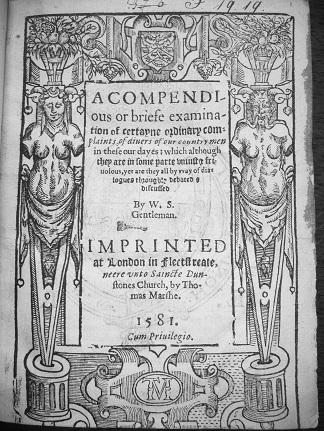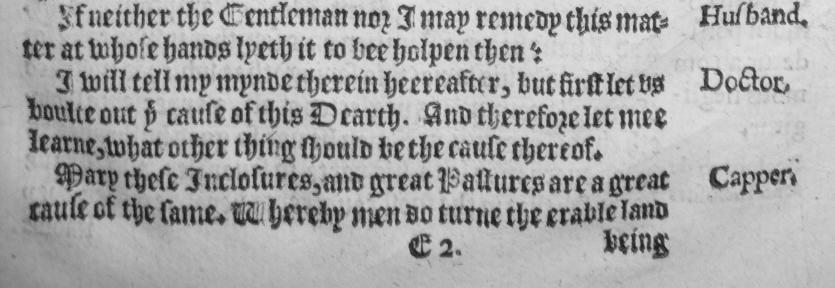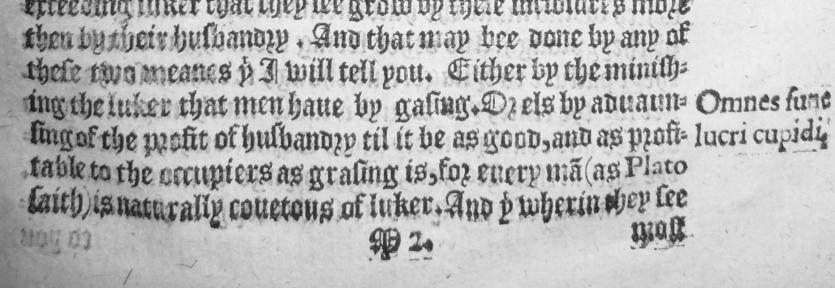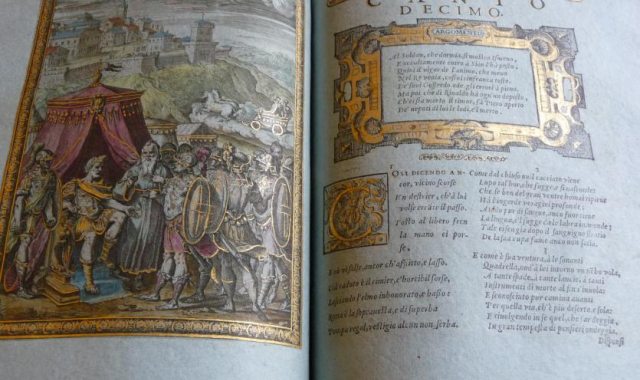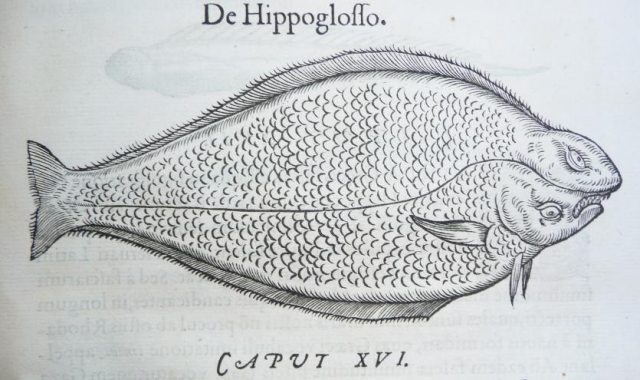Commons and commonwealth
A Compendious or Briefe Examination of Certayne Ordinary Complaints …, by W. S. Printed in London by Thomas Marsh, 1581.
Lower Library, F.19.19
This is the first printing of a work which has been called ‘the most advanced statement of economic thought in Tudor England’ (J. A. Guy), and is better known by its manuscript title of A Discourse of the Commonweal. The initials ‘W. S.’ have been linked with William Shakespeare among others, but Mary Dewar’s 1966 attribution of the Discourse to the scholar and diplomat Sir Thomas Smith (1513–1577) is now accepted as more likely than its previous scholarly attribution to John Hales (1516?–1572). Dewar dates the text to the late summer of 1549, and identifies ‘W. S.’ as Smith’s nephew William, who inherited his uncle’s papers with his house in 1580.
The Discourse treats two urgent problems for theory and policy, the first being severe inflation: the Caian R. B. Outhwaite finds that agricultural prices in England ‘reached, by the 1550s, an average level … 95 per cent above that of the 1530s’, and industrial prices ‘some 70 per cent above’ (Inflation in Tudor and Early Stuart England, 1982). It had long been understood that scarcity of a good raised its price, but the new situation appeared to be that of the ‘dearth’, or dearness, ‘of all things though there be scarcity of nothing’ (A Discourse). The second urgent problem was popular discontent with the enclosure of common land. In the summer of 1549 it had produced in East Anglia the uprising later called Kett’s Rebellion, only put down at the end of August.
Dewar notes in her 1969 edition of the text that the situation provoked an ‘overwhelming flood of pamphlets, books, sermons, poems, and treatises’, in which ‘all sought villains’. However the Discourse represents a free dialogue between five characters – the Doctor, the Knight, the Merchant, the Husbandsman, and the Capper – in which each man called can defend raising his prices as a response to changed market conditions. These the Doctor traces to the debasement and depreciation of the coinage practiced by the government from 1544. In a section written after the restoration of the coinage (Smith revised his papers in 1576) and incorporated into the 1581 printing, the Doctor explains the unchecked inflation by a profusion of New World bullion: that is, an increase in the amount of money in circulation has lowered its value. Dewar places this as the first use in English of a quantity theory of money.
The Doctor suggests that enclosure is beneficial in itself, but harmful when arable land is turned to pasture, and recommends that taxes and duties be revised to make arable farming more profitable. As he elaborates his ideas the originality and anticipation of the Discourse become clear: (1) self-interest is accepted as a normal economic force, which (2) should be managed for the increase of (3) the common wealth, now understood ‘as that which is produced by the third estate, the commonalty, those who worked’ (David Rollison, A Commonwealth of the People, 2010). Rollison holds that ‘the seminal figure in the formulation of an ideology of national growth and expansion ... was Sir Thomas Smith’.

